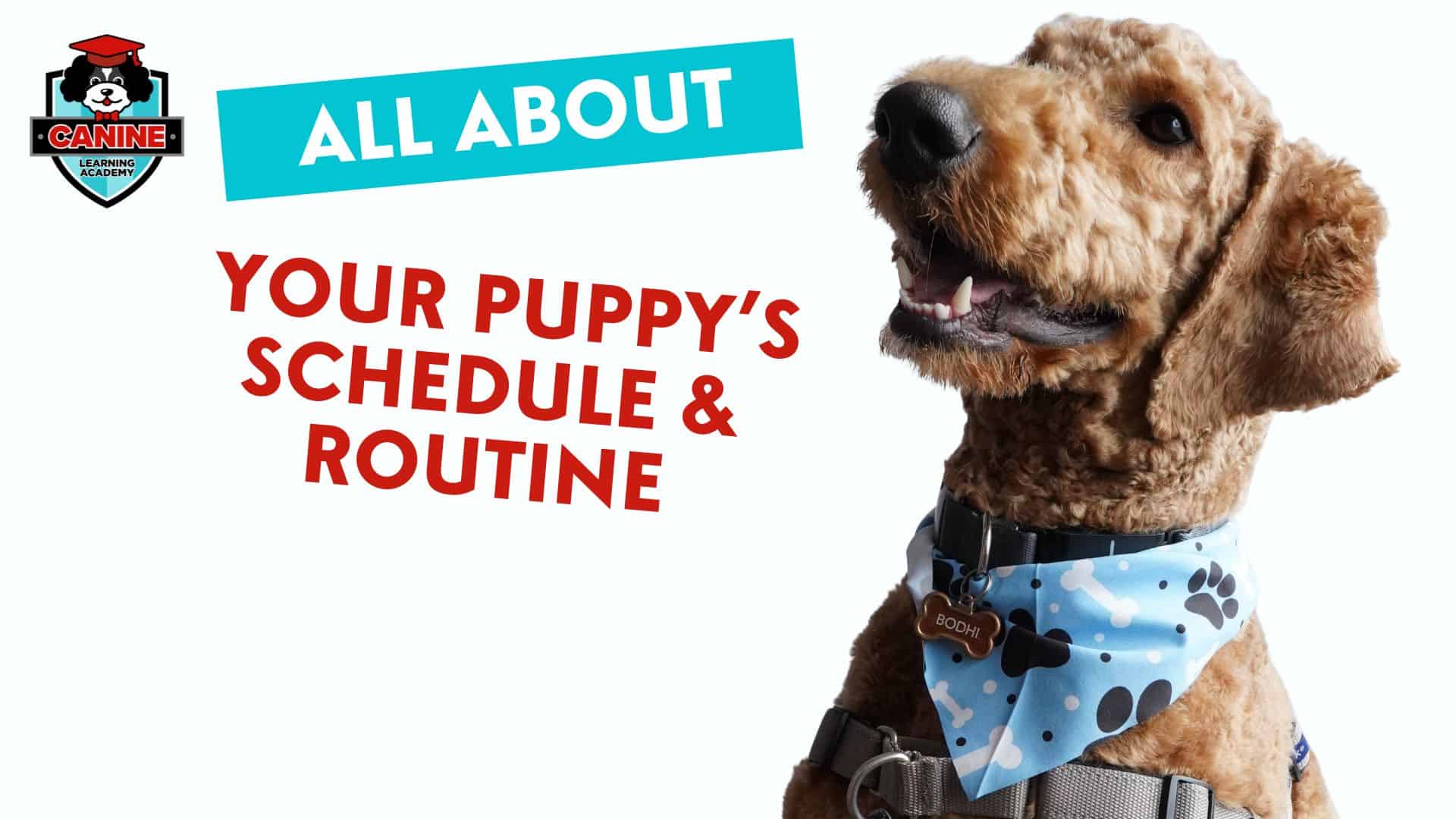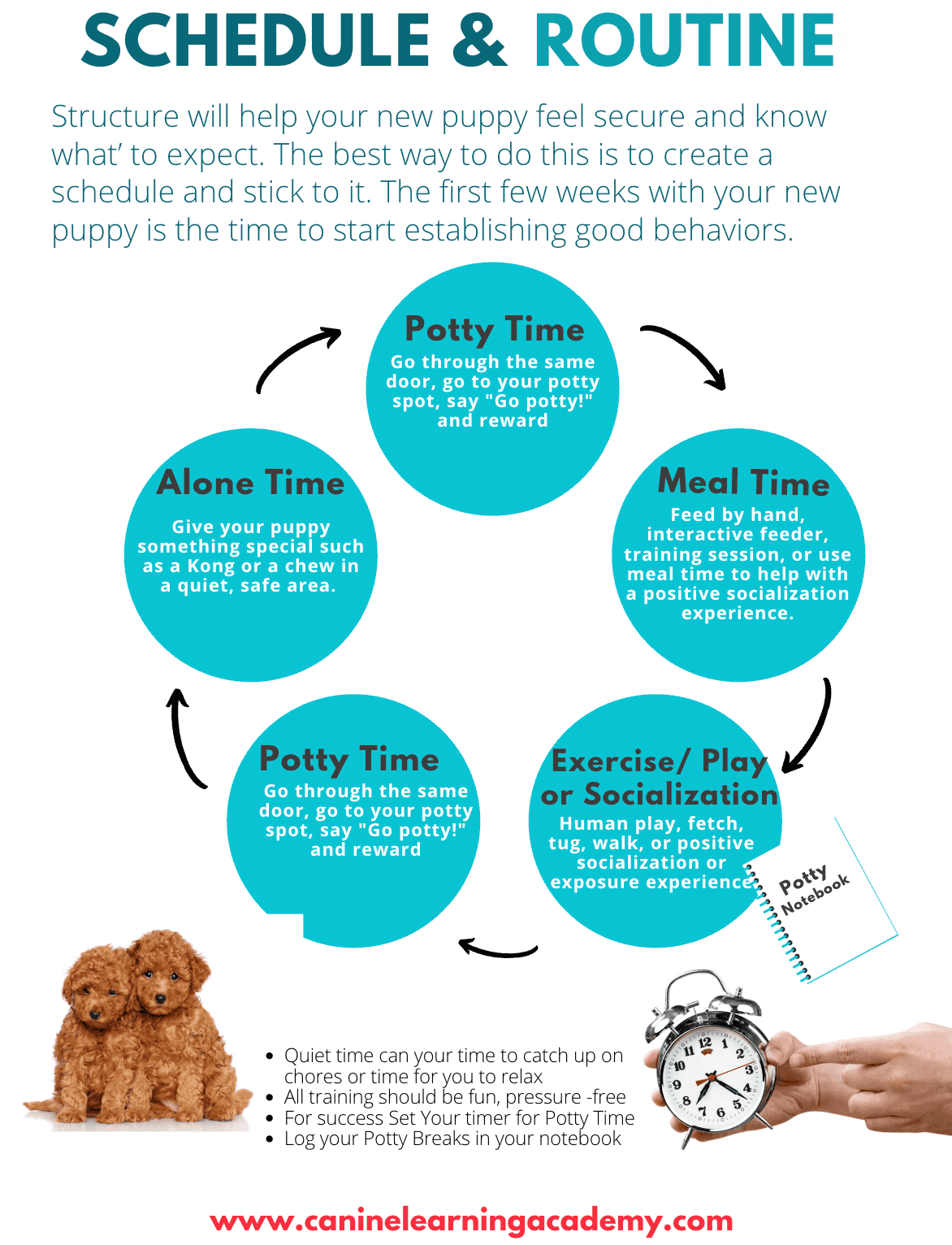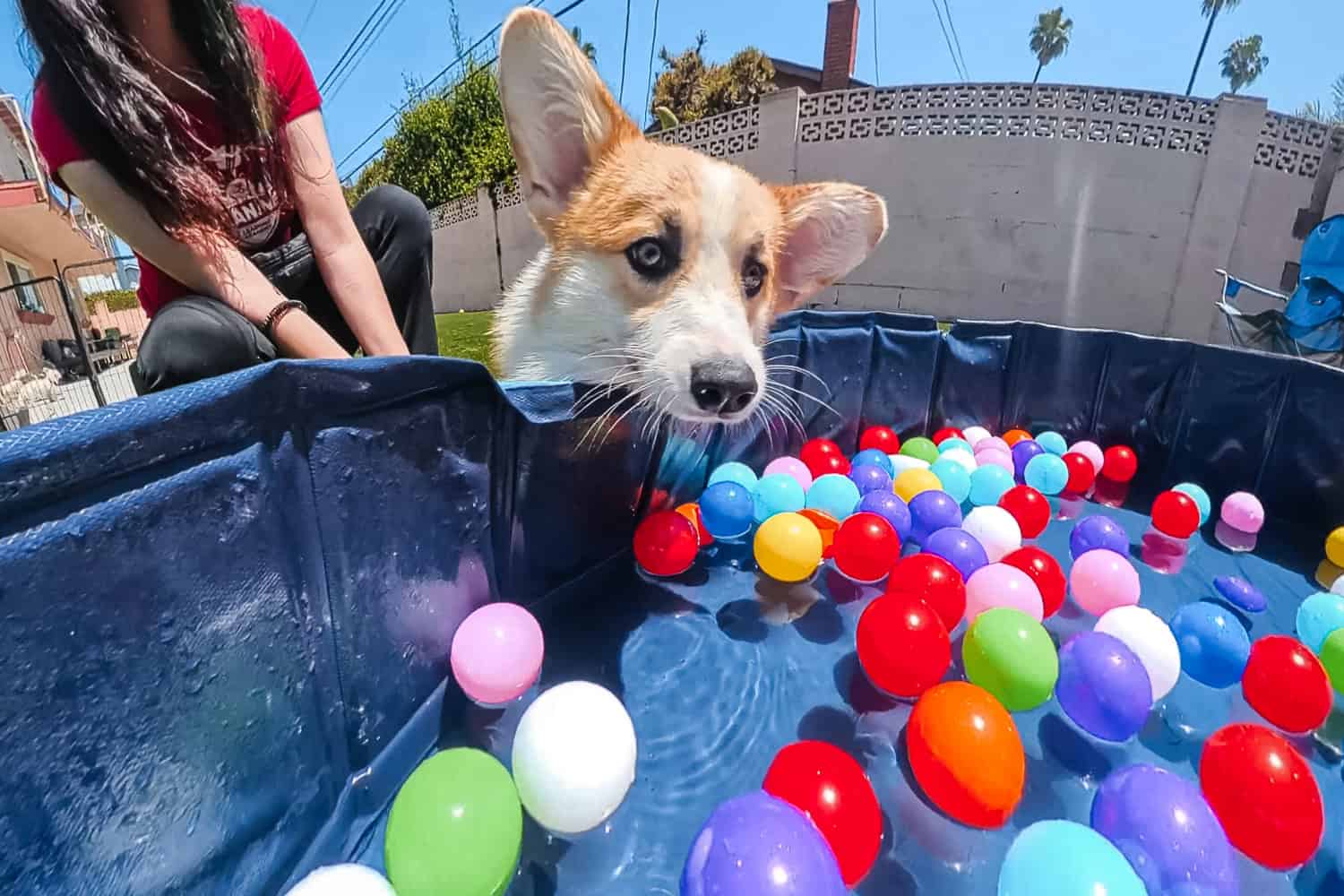Teaching your dog how to stack the rings onto a stick (Ring Toss), is not only a trick you can check off your tricks list it’s always a great opportunity for you (the handler) to better your training skills by being very good at your timing.
Ring toss isn’t an easy trick to teach, but the process is fun and the result is rewarding for both you and your dog! If your dog just recently went through surgery and needs to lay low, this will be a great trick to learn together as it is more mentally challenging than physical. This one requires patience!
For the AKC trick title, they call this trick Ring Toss and it’s a Performer Trick. AKC tricks checklist Click here to download your list. For the AKC the guideline for Ring toss is your dog has to put at least 3 rings on a stacking pole.
For Do More With Your Dog, this trick is called Ring Toss and is an Expert trick. To see the list of tricks for DMWYD, Click here.
Ring Toss Trick Equipment Needed
When your first try to teach the ring toss trick to your dog, you may notice not every ring toss toy is the same. Some ring toss toys work better for teaching your dog this trick than others. What you decide to use all depends on your dogs size and ability.
For this trick, all you need is a post, rings that easily fit on it, some treats, and your dog. We recommend a clicker, too, but it’s not essential. As long as you consistently “mark” the desired behavior, before offering a reward.
- Plastic Rings (only) for Ring Toss Game (12 rings)- Click Here
- Kit with Stable Base 5 sticks and rope and plastic rings- Click Here
- Ring Toss Game (indoor and outdoor)- Click Here
Teaching the Ring Toss trick using Fetch to Hand
Your dog should have a solid fetch to hand before learning the Ring Toss trick.
Fetch to hand is a great life skill to teach your dog, and can also be helpful in many scenarios and a foundation skill for many more advanced tricks such as basketball, achoo, and much more.
To learn to fetch to hand, check out the Fetch to Hand Tutorial.
We will be using fetch-to-hand with the rings, to teach your dog to bring the ring toward your hand. Eventually, we will ask your dog to drop the ring onto the stick.
Step 1- Fetch the Ring
When you start teaching your dog something new, we want to break the behavior down into little bite-size pieces that can be assembled into the whole behavior. It’s helpful if your room is free from distractions and everything is up off the floor so that your dog can focus on just one thing at a time.
Start with a warm-up with a quick 1 minute game of fetch with your dog’s favorite toy or anything fun your dog likes to play with that will get your dog up and moving.
If your dog has to fetch to hand on cue, you can skip to Step 2. Practice a few reps of cueing your dog to fetch the ring and bring it to your hand.
Once your dog is ready to go, ask your dog to chill in front of you. Reward this position since you will be asking your dog to stay here for the training.
The goal is to get your dog to pick up the ring that is on the floor and bring it to you.
Mark for Looking at the Ring
Present your ring from behind your back and wait. The moment your dog looks at it anyway, mark and reward. Repeat a couple of times and then give your dog a break.
Mark for Touching the Ring
Next, present your ring, and the moment your dog touches the ring you’re going to mark and reward it. Repeat a few times and progress to only marking only if your dog puts their mouth on it. Once your dog is reliably putting their mouth on it, you are ready to move on.
In your next training session you’ll be progressively presenting the ring closer and closer to the ground, and eventually, just put the ring directly onto the floor near your dog. Every time your dog puts their mouth on the ring, mark and reward each success. It’s easier for your dog to understand what you want if you pick up the ring between reps after you reward your dog and then present it again.
If your dog touches the ring with a paw, instead of their mouth just Ignore it. It’s not what you want, and it may cause confusion if you change the criteria later. Mouth? Yes! Paw? Try again, that’s not what we want.
Mark for Picking Up the Ring
Now that your dog is reliably mouthing the ring while it’s on the floor you’re ready to progress to carrying the ring to you. The easiest way to teach this is you encourage your dog to start moving the moment they put the ring in their mouth. If your dog has a nose target to hand, you can simply use that to get your dog to carry the ring to you.
Present your ring on the floor and encourage your dog to go pick it up as you did before. The moment they do, cue your do to nose touch your hand and then present your hand. When your dog begins to walk towards you with the ring in their mouth, be ready to mark and reward your dog. It’s best if you are relatively close to your dog when you ask your dog to nose target so that they don’t have to carry the ring far.
Keep practicing and make it really fun for your dog. Short mini-training sessions work best for training.
Ring to Drop to hand
Now that your dog is carrying the ring to your hand, it’s easy to get the drop to your hand. If you’ve done multiple reps in the last step, your dog is already anticipating the nose target to get the cue to your hand. Instead of cueing a nose target to hand, you can simply present your hand instead.
Place your ring on the floor about 3 feet away from you. Encourage your dog to go get the ring. When your dog put the ring in their mouth, present your hand right under their mouth. Cue your drop, and wait for your dog to drop the ring into your hand. The moment they do, mark, praise, and reward generously.
Practice Practice Practice this step so that your dog is comfortable fetching the ring and bringing it to your hand.
Once reliable, you can put this behavior on cue. A common cue for this is “fetch” or “bring it”
Step 2- Place the Ring on Stick (Ring Toss Post)
Now that your dog can fetch the ring and bring it to your hand, you can progress to teaching your dog to stack the rings.
Bring the stick directly in front of you and place it on the ground so that it’s between you and your dog. Now ask your dog to fetch the ring. Present your hand with your palm up, directly in front, and over the stick, for your dog to drop the ring into your hand. Mark and reward each success.

Practice a few times with your hand in front of the stick, before moving your hand. Next, move your hand over slightly over the stick instead of in front and ask your dog to bring the ring to you. Mark and reward like you did before.
On your next repetition, remove your hand the moment your dog drops the ring. If your hand was over the stick, the ring should fall into place. At first, if your dog drops it anywhere touching the stick, mark, and reward. We want to let the dog know that the ring if the ring touches the post they will be rewarded. Once your dog has caught onto what you want, you can get pickier and expect your dog to place the ring over the post.

Eventually, you can simply point to the stick to ask your dog to drop the ring onto the stick.
Step 3: Put Ring Toss Trick on Cue
When your dog is reliably bringing the ring and placing it over the stick, you can out this trick on cue. A common cue for this is “ring toss”.
Cues should be able to be given consistently, distinct from other cues your dog already knows, not confused with praise or other meanings, and easy to transfer to others.
To add a cue to this trick, just before your dog puts the ring on the stick, quietly say your cue word or make a hand signal.
When the dog performs the trick, mark and then offer a treat. As soon as your dog has finished eating, say your cue again and point to another ring on the ground. When your dog brings the second ring over to the stick, mark, and reward. Repeat to the third ring and eventually forth.
Continue the sequence of cue-behavior-mark-treat several times in a row.
Once you’ve done a few more practices and your dog knows this trick on cue, only mark and reward if you cue the trick.
Success and Troubleshooting
Reminder to keep your training sessions short and fun. Set your timer or count out your treat so that you are working for no more than 2 minutes a time with your dog.
If your dog gets frustrated or walks away, be sure to take a step back in your training to where they were successful before you begin again.
Looking for something fun to do together with your dog?
Would you like to form a closer relationship and learn to communicate more clearly with your dog? Join our tricks and more classes.
During class, you will learn the foundation of how to break down complicated tricks into smaller-easier behaviors. Once you understand how to train tricks, the possibilities are endless as to what you can teach your dog.
To learn more, click here
About the Author: Yo Armendariz KPA CTP, CDTI, CSD


Certified Dog Trainer Yo Armendariz is the owner of Canine Learning Academy in Sunset Beach, California.
She has many years of experience training dogs and their humans as well as raising puppies in her home and is a graduate of the Karen Pryor Academy Dog Trainer Program. Karen Pryor Academy is a rigorous certification program that requires continuing education and a pledge to train using force-free methods and techniques.
Yo uses clicker training and positive reinforcement to solve problems and train dogs to a high level of training and specializes in training families that live in busy cities that want a well-mannered dog that can go everywhere and service dogs.





